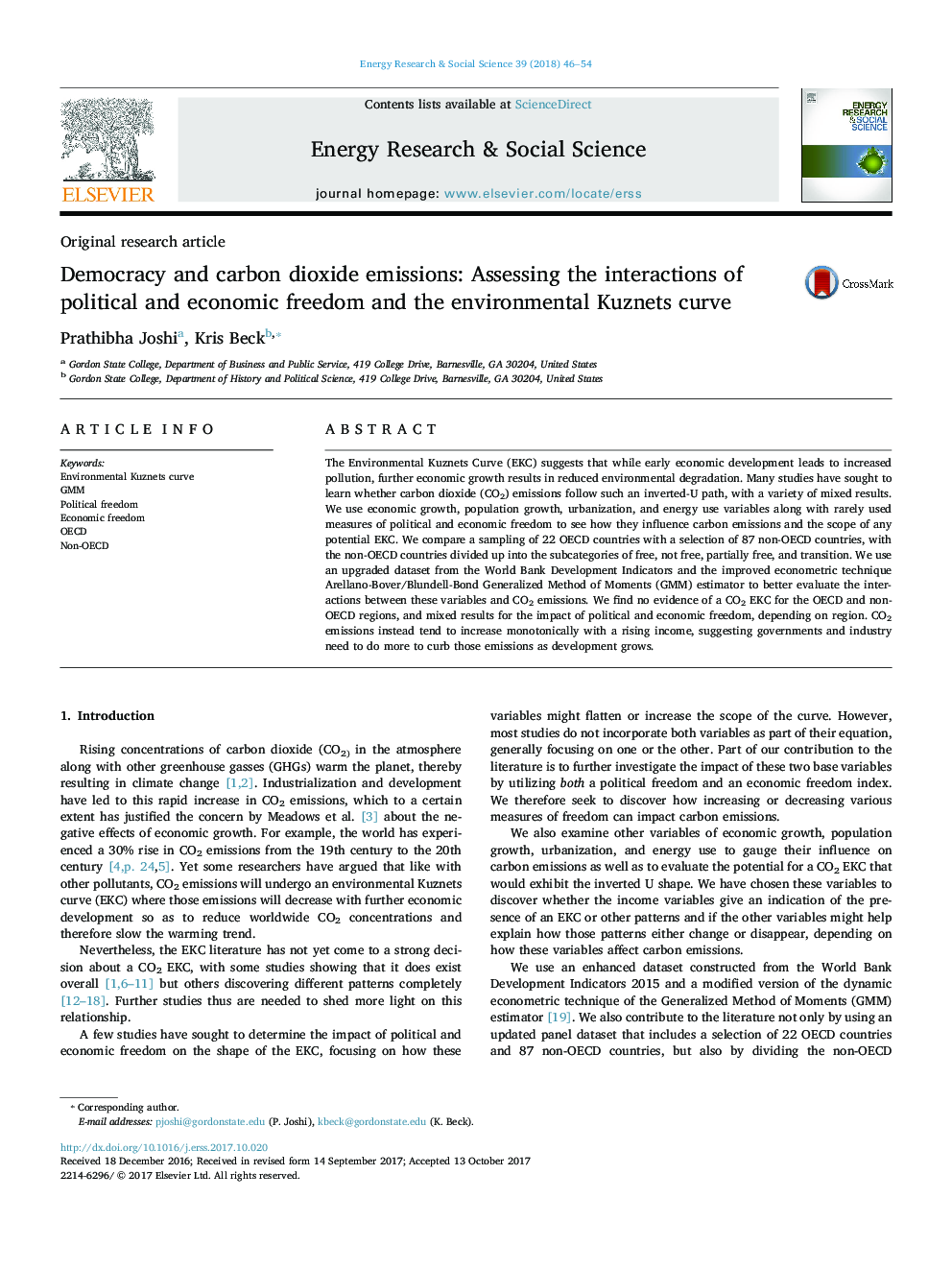| Article ID | Journal | Published Year | Pages | File Type |
|---|---|---|---|---|
| 6557611 | Energy Research & Social Science | 2018 | 9 Pages |
Abstract
The Environmental Kuznets Curve (EKC) suggests that while early economic development leads to increased pollution, further economic growth results in reduced environmental degradation. Many studies have sought to learn whether carbon dioxide (CO2) emissions follow such an inverted-U path, with a variety of mixed results. We use economic growth, population growth, urbanization, and energy use variables along with rarely used measures of political and economic freedom to see how they influence carbon emissions and the scope of any potential EKC. We compare a sampling of 22 OECD countries with a selection of 87 non-OECD countries, with the non-OECD countries divided up into the subcategories of free, not free, partially free, and transition. We use an upgraded dataset from the World Bank Development Indicators and the improved econometric technique Arellano-Bover/Blundell-Bond Generalized Method of Moments (GMM) estimator to better evaluate the interactions between these variables and CO2 emissions. We find no evidence of a CO2 EKC for the OECD and non-OECD regions, and mixed results for the impact of political and economic freedom, depending on region. CO2 emissions instead tend to increase monotonically with a rising income, suggesting governments and industry need to do more to curb those emissions as development grows.
Related Topics
Physical Sciences and Engineering
Energy
Energy (General)
Authors
Prathibha Joshi, Kris Beck,
